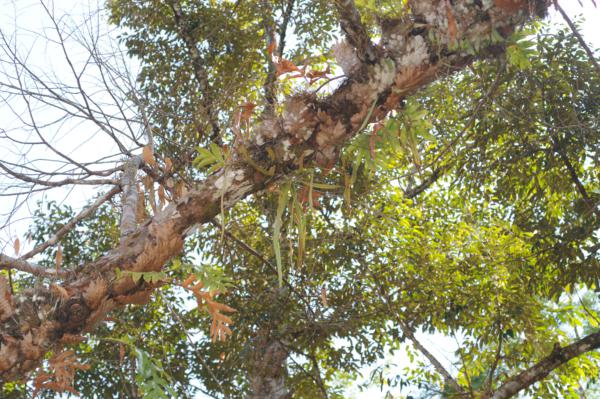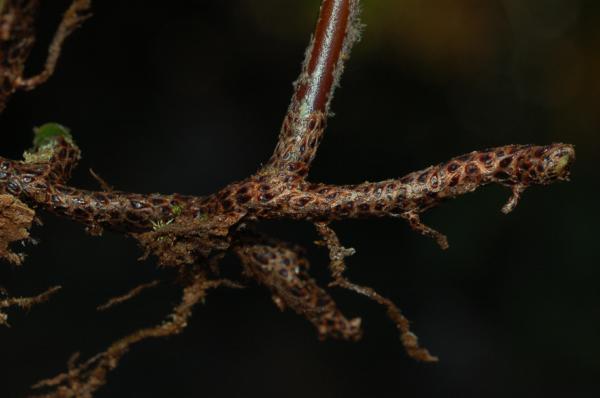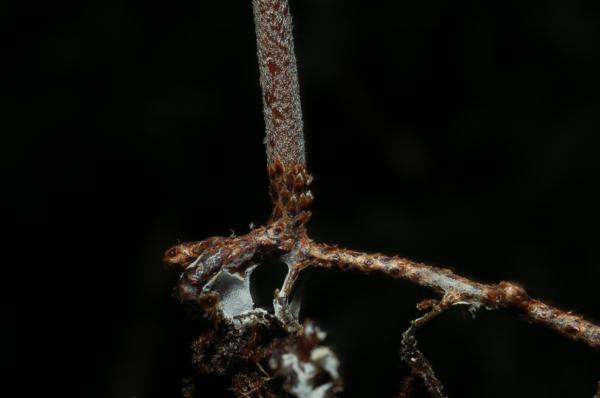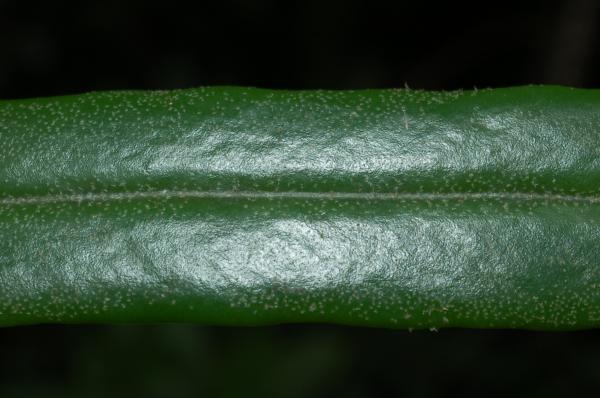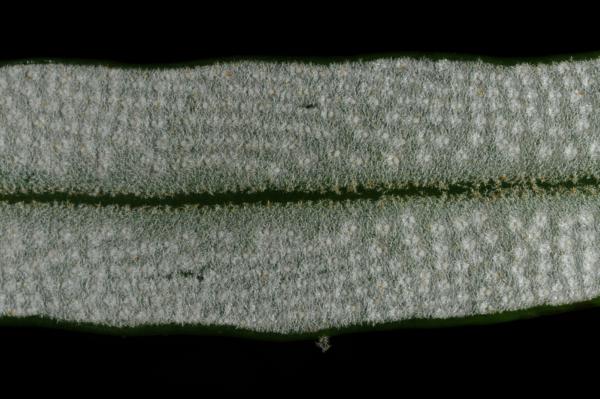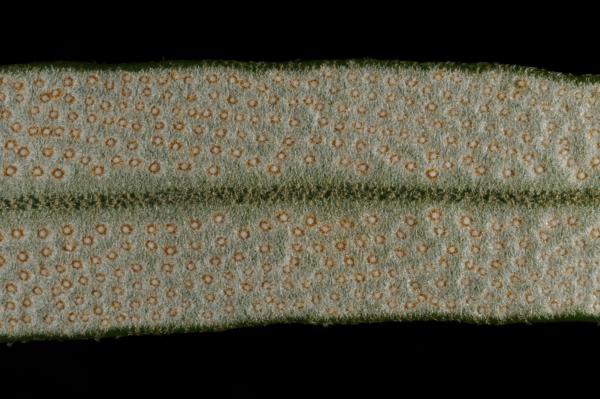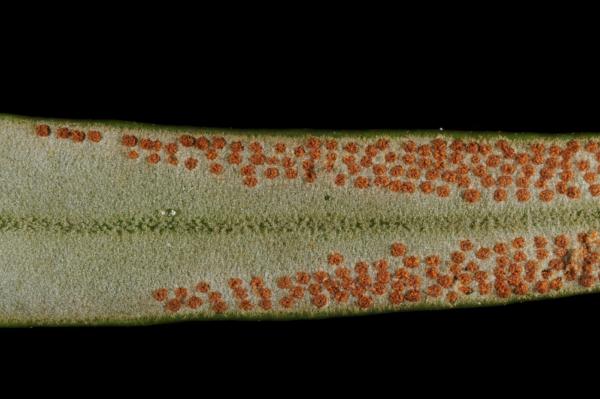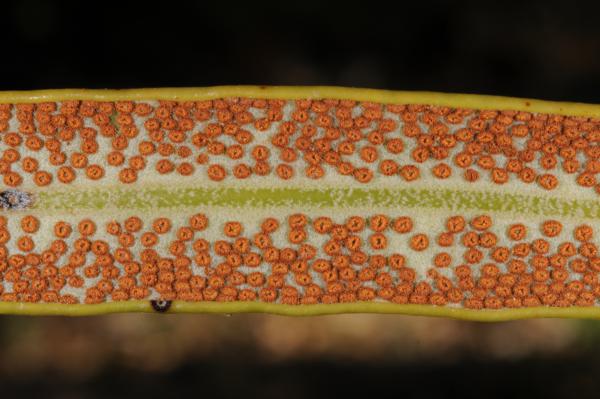
Pyrrosia longifolia (Burm.f.) C.V.Morton
Family
Polypodiaceae
Nomenclature
Pyrrosia longifolia (Burm.f.) C.V.Morton, J. Wash. Acad. Sci. 36: 168. 1946; Holttum, Rev. Fl. Malaya ed. 1, 2: 148, f. 63. 1955 [‘1954’]; Holttum, Dansk Bot. Ark. 20: 19. 1961; Seidenf., Nat. Hist. Bull. Siam. Soc. 19: 86. 1958; Tagawa & K.Iwats., SouthE. Asian Stud. 3(3): 75. 1965; Tagawa & K.Iwats., Acta Phytotax. Geobot 23: 52. 1968; Hovenkamp, Leiden Bot. Ser. 9: 208, f. 25. 1986; Tagawa & K.Iwats., Fl. Thailand 3: 497. 1989; Hovenkamp, Fl. Males., Ser. II, Ferns and Fern Allies 3: 163. 1998; Boonkerd & Pollawatn, Pterid. Thailand: 259, 286. 2000; Newman et al., Checkl. Vasc. Pl. Lao PDR: 30. 2007. – Acrostichum longifolium Burm.f., Fl. Indica.: 228. 1768. – Type: D.Pryon s.n. (G), Java.
Polypodium acrostichoides G.Forst., Fl. Ins. Austr. 81. 1786. – Cyclophorus acrostichoides (G.Forst.) C.Presl, Epimel. Bot.: 130. 1851 [‘1849’]; C.Chr., Bot. Tidsskr. 32: 348. 1916; E.Smith, J. Siam Soc. Nat. Hist. Suppl. 8: 7 1929. – Niphobolus acrostichoides (G.Forst.) Bedd., Ferns Brit. India t. 81. 1868; Bedd., Handb. Ferns Brit. India: 327. 1883; Christ, Bot. Tidsskr. 24: 105. 1901. – Pyrrosia acrostichoides (G.Forst.) Ching, Bull. Chin. Bot. Soc. 1: 69. 1935; Tardieu & C.Chr., Fl. Indo-Chine 7(2): 514. 1941.
Pyrrosia rasamalae auct. non (Racib.) K.H.Shing: Newman et al., Checkl. Vasc. Pl. Lao PDR: 30. 2007.
Description
Rhizome long creeping, stout, about 1.5–2.5(–2.7) mm diam., bearing fronds 1–6 cm apart, densely scaly throughout; scales oblong-ovate, acute at apex, round at base, 1–2.5(–3.4) mm long, 0.6–1.5 mm broad, distinctly bi-coloured with dark brown to nearly black central portion and pale ferrugineous margin, subentire or more or less irregular at margin. Fronds simple. Stipes indistinct or not, 0.5–10(–22) cm long, green to pale brown, usually on phyllopodia of about 3–7 mm in height, scaly on phyllopodia, glabrescent in other portion. Laminae linear, gradually narrowing towards acute apex, attenuate at base and decurrent towards wings of stipes, (9–)20–69(–110) by (0.7–)1–2(–4.5) cm, more or less involute at margin; midrib distinctly raised beneath, veins all hardly visible, anastomosing; rigid coriaceous, covered with stellate hairs, paler. Sori round, distinct, densely covered on the upper half of fronds underneath, the soriferous portion more or less narrowing.
Distribution in Thailand
NORTH-EASTERN: Sakon Nakhon, Khon Kaen; EASTERN: Chaiyaphum, Nakhon Ratchasima, Buri Ram, Ubon Ratchanthani; SOUTH-WESTERN: Phetchaburi, Prachuap Khiri Khan; SOUTH-EASTERN: Chon Buri, Chanthaburi, Trat; PENINSULAR: Ranong, Surat Thani, Phangnga, Phuket, Nakhon Si Thammarat, Krabi, Phatthalung, Satun, Yala, Narathiwat.
Distribution in Laos
Champasak, Khammouane, Savannakhet.
Distribution in Cambodia
Koh Kong.
Wider Distribution
Widely known in Malesia and Polynesia, southwards to Australia and northwards to S China (Hainan) and N Vietnam; also recorded from Sri Lanka and S India.
Ecology
Epiphytic on tree trunks in open places or in light shade, common at low altitudes.
Proposed IUCN Conservation Assessment
Least Concern (LC). This species is common and widespread and not under any known threat.
Voucher specimens - Thailand
Middleton et al. 5178, Ubon Ratchathani, Phu Chong Nayoi National Park (E); Middleton et al. 4610, Trat, Ko Chang, Thanmagon Waterfall (E).
Voucher specimens - Laos
Maxwell 98-414, Champasak (CMU); Newman et al. LAO 915, Khammouane, Lak Sao (E); Maxwell 07-191, Savannakhet (CMU)
Voucher specimens - Cambodia
Long et al. CL508 & CL511, Koh Kong (P).
Habit (the pendulous strap-shaped plant)
Rhizome
Rhizome and stipe base
Upper surface of frond
Lower surface of frond with young sori
Lower surface of frond with young sori
Lower surface of frond with older sori
Lower surface of frond with sori
Site hosted by the Royal Botanic Garden Edinburgh. Content managed by Stuart Lindsay, Gardens by the Bay, Singapore and David Middleton, Singapore Botanic Gardens. Last updated 24 January 2012
